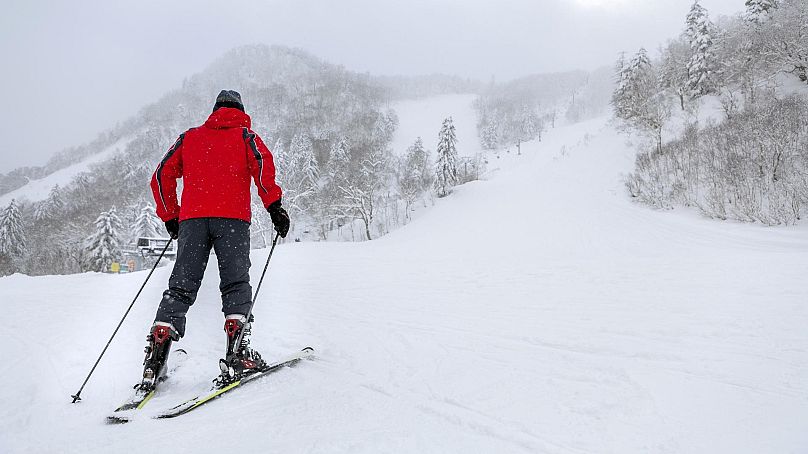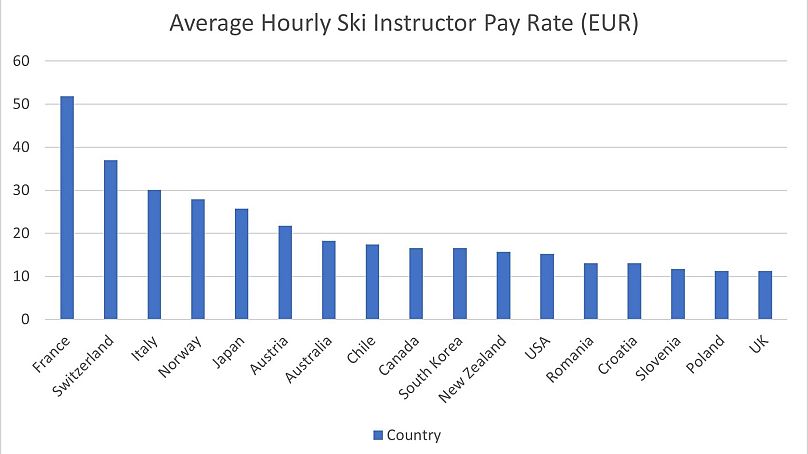The experts tell us just how to turn your hobby into a job by becoming a travelling ski instructor.
Jetting off to a winter wonderland ski resort is a dream come true for many - and it’s likely that we all know a would-be ski instructor. A social media page brimming with photos and videos of snow-covered slopes, stunning mountain views, world-class tricks, and the exuberant apres-ski life are all a part of the package.
It’s a common misconception to think of skiing as just a hobby that you can’t make a living out of. The reality is that you can be a full-time ski or snowboard instructor and travel with the seasons. You’ll not only be living your dream job, but you’ll also be seeing all corners of the world.
With some know-how from the experts at SIA Austria, a ski instructor academy, we’ve got a guide to help you do just that.
The timeless ski instructor
The concept of travelling with the seasons revolves around jetting off to prime winter season locations across the globe so that you can have a full ski season calendar all year round.
Shred in the French or Austrian Alps from December to April, then head to Argentina in the Southern Hemisphere for a ski season from June to October. With a total of 8,574 skiers visiting France in 2020 and 2,960 who visited Austria, you’re sure to have a lot of eager ski students in Europe.
If you feel like exploring the Northern Hemisphere beyond Europe, you can go to Canada in North America, where the season runs from late November to late April, or Japan in East Asia.
Japan’s doors open to skiers from mid-to-late December and close around late March or early April. The country is ideal for beginners as the snow is very soft so you will have a lot of teaching opportunities.
What if you can’t travel?
There are several reasons why you might not be able to have a ski season abroad - including affordability, personal circumstances, or global travel restrictions.
According to Statista, COVID-19 has had a significant impact on the occupancy rates in ski resorts in France during winter 2020 to 2021. The occupancy rate in ski resorts with large domains was 24 per cent, while small resorts at lower altitudes had a better occupancy rate of 42 per cent.
On the contrary, between 2016 and 2019, large and very large ski resorts were more popular. Throughout that period, 39 per cent of skier-days were spent on the slopes of large ski resorts, and another 39 per cent on the slopes of very large ski resorts. Only 13 per cent of skier-days were spent on medium-sized ski resorts and another 9 per cent on small ski resorts.
Even though winter 2020 to 2021 was a poor season for ski and snowboard instructors, ski resorts were not fully closed as they were in winter 2019 to 2020.
If you find yourself in a situation where you aren’t able to find a winter wonderland destination abroad, hope is not lost. You can explore the options that your home country has to offer.
In the UK, Nevis Range, Glenshee, and Glencoe Mountain are some of the most popular ski resorts. Although their elevation is low, they’re still great places to put your instructor skills into practice.
Alternatively, many indoor ski slopes are also on the lookout for ski and snowboard instructors, so it’s worth exploring this opportunity when you aren’t able to travel.
How to become a ski instructor?
The life of a full-time ski instructor is a dream come true for many. You’re indulging in your passion for powder, while constantly meeting new people and exploring all corners of the world through the lenses of your goggles.
So, if you’re interested in learning how to take on this dream job, here are the basic steps you need to follow.
- Decide whether you want to teach in one particular country or you want to travel. Each country has its own governing body that manages all ski and snowboard instructors and is signed up to the ISIA (International Ski Instructor Association). Make sure that the country in which you are undertaking your course gives a qualification that is recognised in multiple countries.
- Find a course. You don’t need any qualifications to start one, but you need to have a basic level of competency. The course will help you progress on your skiing journey and will also aid your teaching journey.
- Once you’ve attained your desired level of competency and earned your certificate, you can start looking for a job at a ski school.
- Upskill. There are four main levels of qualification, which means that only the sky is the limit when it comes to your ski instructor journey.
Can you make a living as a ski instructor?
Making a living as a ski instructor is definitely possible, especially if you decide to do it full-time.
According to Snow Recruiter, you could earn anywhere from an average of €11.37 an hour as a ski instructor in the UK to an average of €52.05 an hour working in France. Not only are the rates above the national minimum wage, but they’re also quite competitive depending on your desired travel destination.
You should consider that if you’re working as a part-time ski instructor, you’ll only be earning for four months of the year. Whereas, if you are a full-time ski instructor and are travelling with the seasons, you’re looking at a double, if not triple the salary. Keep in mind your expenses, as well, such as flights, accommodation, and lifestyle.













